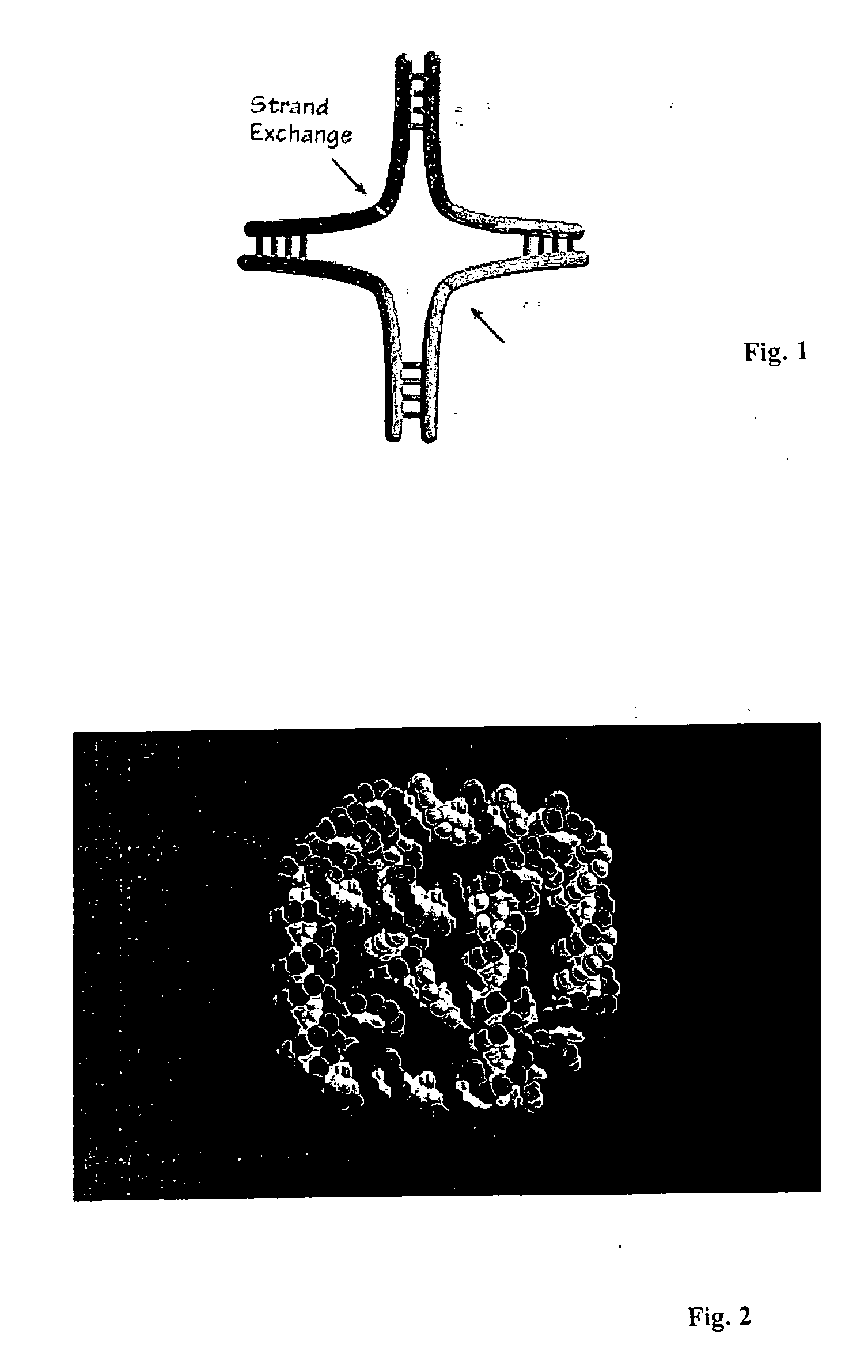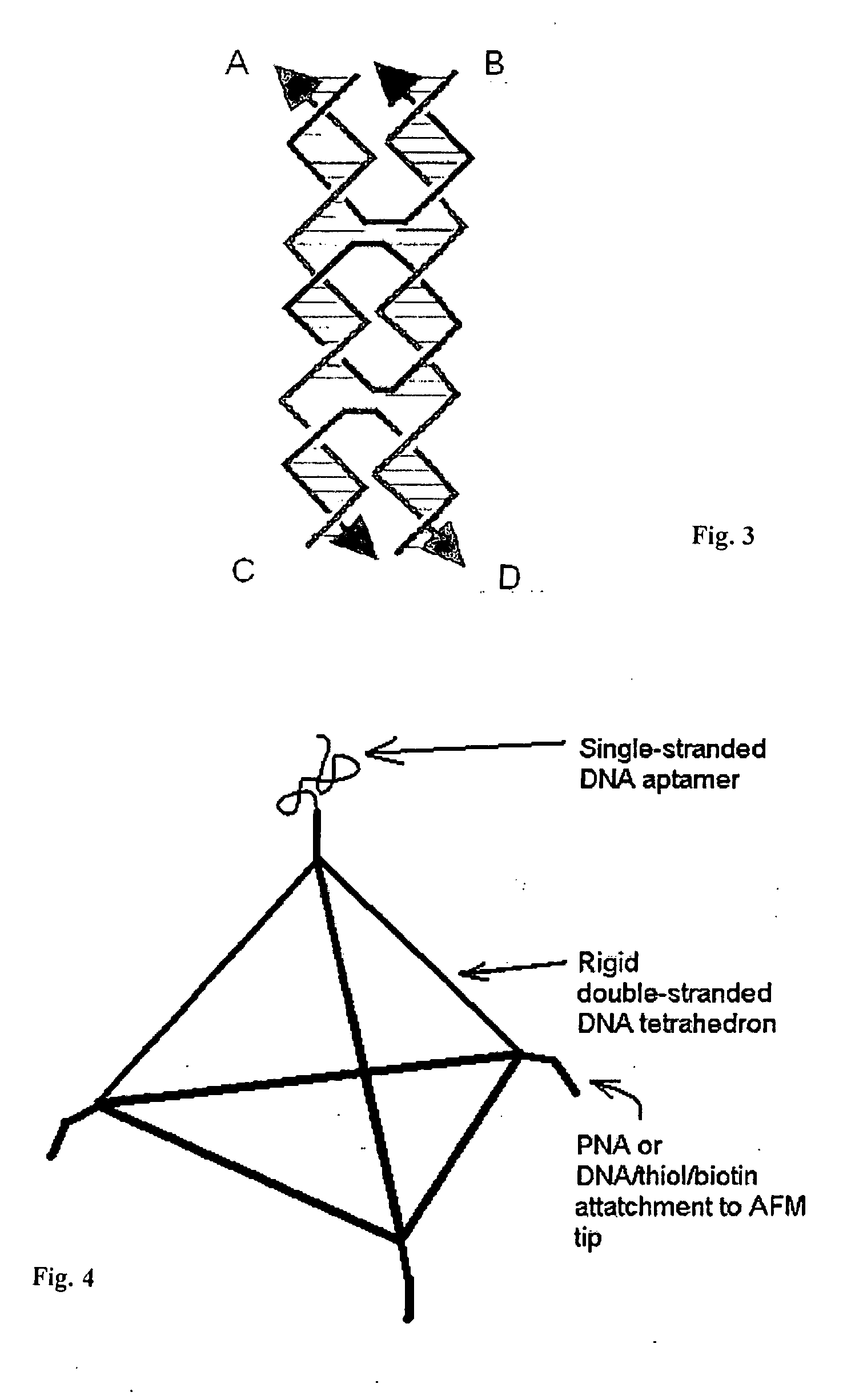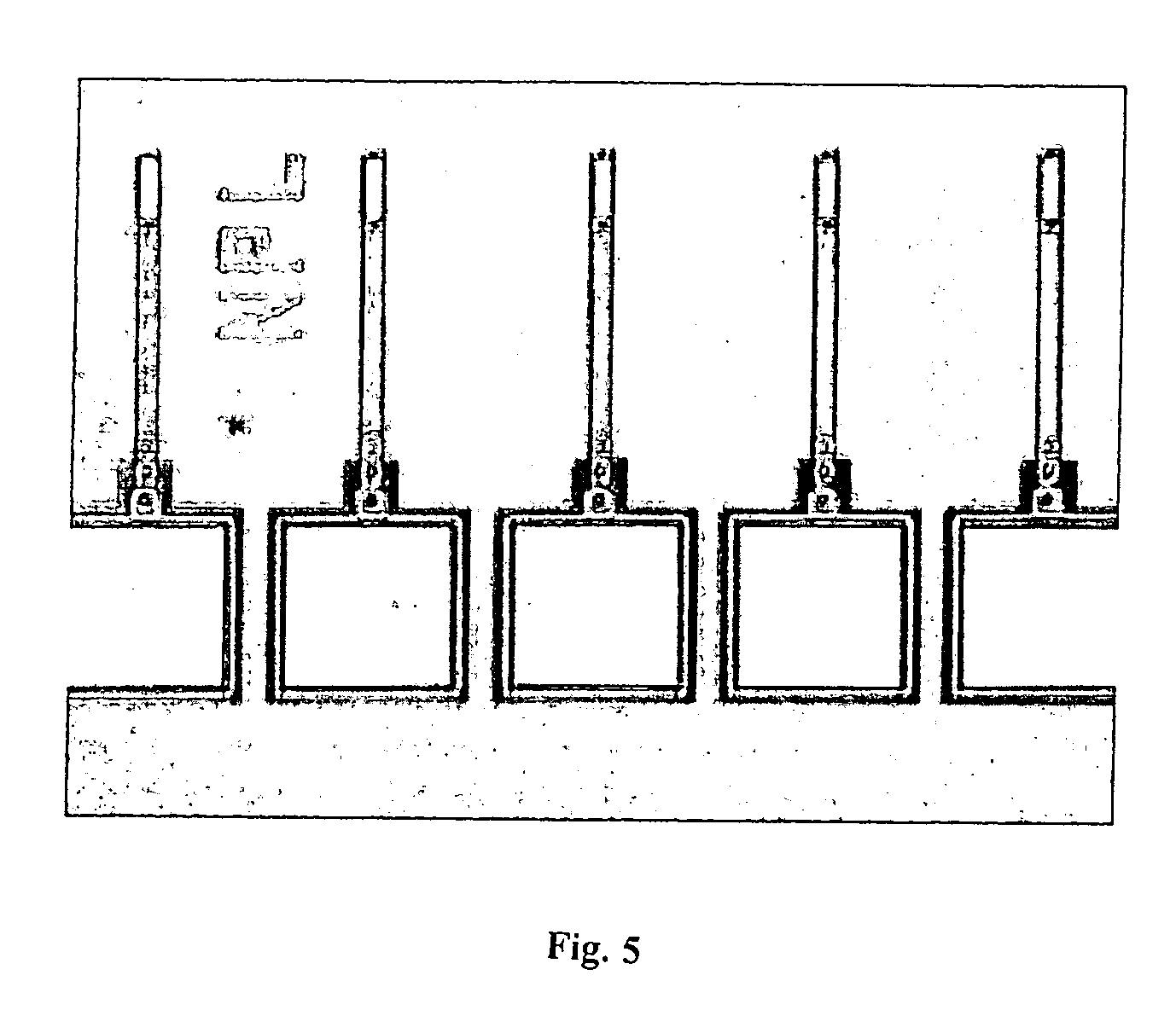Microscopy tip
a microscopy and tip technology, applied in the field of tips, can solve problems such as uncertainty, wear and tear of silicon tips, and loss of sharpness
- Summary
- Abstract
- Description
- Claims
- Application Information
AI Technical Summary
Benefits of technology
Problems solved by technology
Method used
Image
Examples
Embodiment Construction
[0023] In order to achieve DNA self-assembly, specific oligonucleotide sequences are hybridized under optimum hybridization conditions. DNA combines a high specificity in intermolecular interactions with a large variety of specific binding pairs and is therefore an ideal molecule for the creation of molecular constructs. Two- and three-dimensional structures can be made by self-assembly of synthetic oligonucleotides whose base sequences are designed to control the way in which they hybridise. For example DNA tags have been used to organise the assembly of colloidal particles [1], direct the growth of semiconductor nanocrystals [2, 3] and metal wires [4]. DNA molecules can be used to ensure self-assembly of complex structures, for example by engineering junction structures into otherwise linear molecules (FIG. 1). By this means, DNA polyhedra have been successfully synthesized [5, 6], and simple nanomachines demonstrated [7]. A representation of a DNA cube is shown in FIG. 2. The key...
PUM
| Property | Measurement | Unit |
|---|---|---|
| length | aaaaa | aaaaa |
| persistence length | aaaaa | aaaaa |
| persistence length | aaaaa | aaaaa |
Abstract
Description
Claims
Application Information
 Login to View More
Login to View More - R&D
- Intellectual Property
- Life Sciences
- Materials
- Tech Scout
- Unparalleled Data Quality
- Higher Quality Content
- 60% Fewer Hallucinations
Browse by: Latest US Patents, China's latest patents, Technical Efficacy Thesaurus, Application Domain, Technology Topic, Popular Technical Reports.
© 2025 PatSnap. All rights reserved.Legal|Privacy policy|Modern Slavery Act Transparency Statement|Sitemap|About US| Contact US: help@patsnap.com



